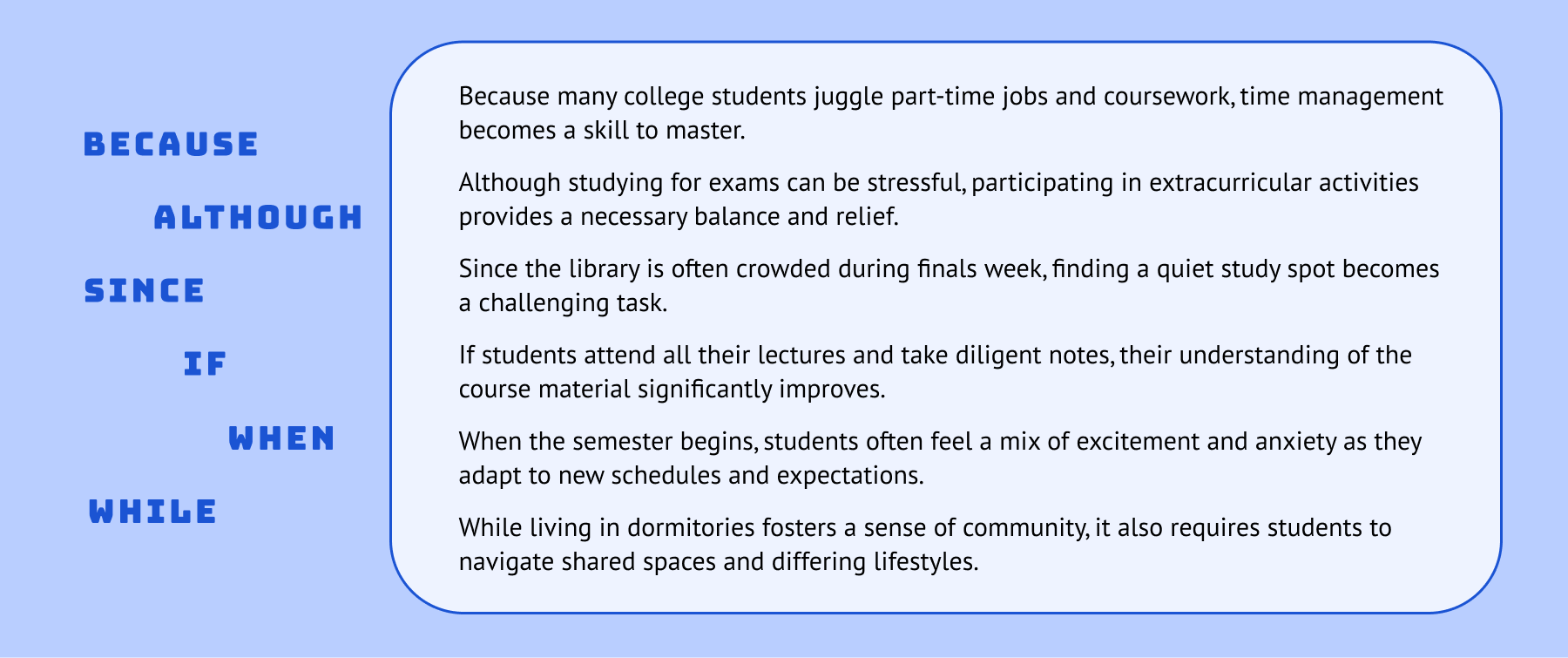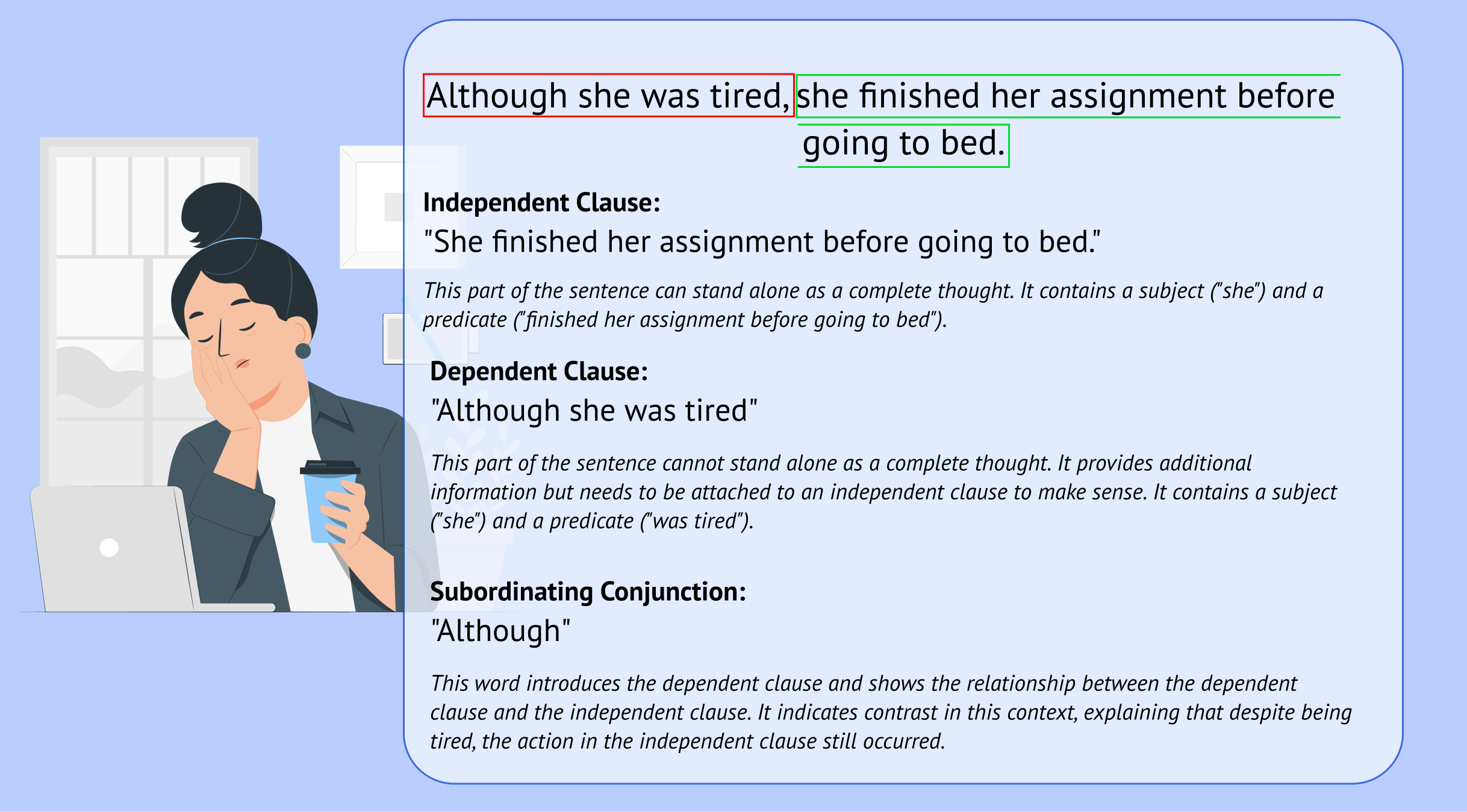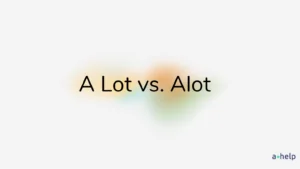Ever tried to build a piece of IKEA furniture without a manual? That’s what writing can feel like if you don’t understand complex sentences. But if you do know how to use them, your writing transforms from basic assembly instructions to a symphony of ideas. Let’s see how all this works. And we promise, no Allen wrenches are required.

✅ AI Essay Writer ✅ AI Detector ✅ Plagchecker ✅ Paraphraser
✅ Summarizer ✅ Citation Generator
What is a Complex Sentence?
We all know from the early days of schooling that a few words together make sentences. They’re the building blocks of our communication, much like the tiny Lego pieces that hold our grand constructions together. Sentences come in different flavors: simple, compound, and complex, each with its characteristics. They can express statements, questions, exclamations, or commands, each performing distinct functions in communication.
A complex sentence is made up of one independent clause and at least one dependent clause. The independent clause is a complete thought that can stand alone, while the dependent clause, though related, cannot exist separately and needs the independent clause to make sense.
So, how do you spot these tasty sentences? Look for sentences that have a main clause and one or more subordinate clauses. Subordinate clauses often start with words like “because,” “although,” “since,” “if,” “when,” and “while.” For example:

Other ways to identify a complex sentence is by relative pronouns and punctuation. Pronouns like “which”, “that”, “who”, “whom”, “whose” introduce clauses that modify nouns, and a comma often separates the dependent clause from the independent clause if the dependent clause comes first. After writing, check your text with a proofreading tool.
When to Use Complex Sentences vs Simple Sentences
Complex sentences are your best friend when you want to show the relationship between ideas, add depth to your writing, and convey more information. They allow the writer to connect ideas elegantly and emphasize certain points over others. They are perfect for explanations, descriptions, and showing cause and effect. Use them to:
| Context | Example | Details |
| Provide detailed explanations | “She stayed up late because she had to finish her project.” | Complex sentences can help you elaborate on the reasons behind actions, providing a fuller picture for your reader. |
| Show cause and effect | “He missed the bus since he woke up late.” |
These sentences clearly demonstrate the relationship between events, making it easier for readers to understand the sequence and connection between actions. |
| Add depth to descriptions | “The campus feels peaceful when the sun sets and the lights begin to glow softly in the evening.” |
By combining descriptive elements, complex sentences can create vivid imagery and a more immersive experience for the reader. |
| Contrast ideas | “Although the library is often crowded, it remains the best place to study because of its quiet zones and resources.” |
Using complex sentences allows you to present contrasting ideas within a single sentence, highlighting differences and nuances. |
| Explain conditions | “If you complete your assignments on time, you can enjoy the weekend without stress.” | Conditional statements help to explain potential outcomes based on certain conditions, adding clarity to your writing. |
| Illustrate relationships between actions | “While she listens to music, she completes her homework more efficiently.” | These sentences can show how different actions are related, often indicating that one activity influences or happens simultaneously with another. |
However, try not to overuse them. In certain types of writing, like instructions or action scenes, shorter sentences might work better to maintain clarity and pace. Simple sentences make instructions easier to follow and action scenes remain dynamic and fast-paced.
- Action Scenes: “She ran to the door. She opened it quickly.”
Simple sentences are effective in action scenes because they create a fast-paced, dynamic flow that mirrors the urgency and rapid progression of events. They allow the reader to follow the action easily without getting bogged down by complex structures.
2. Instructions: “Press the button. Wait for the light to turn green.”
When giving instructions, simplicity is key to prevent confusion. Simple sentences break down tasks into clear, manageable steps, making it easier for the reader to follow along and execute the instructions correctly.
3. Conveying Urgency: “Call 911. Stay calm.”
In emergencies or situations requiring immediate action, simple sentences deliver the message quickly and unambiguously, ensuring that the reader understands exactly what needs to be done without delay.
4. Highlighting Key Points: “Study hard. Get good grades.”
When you want to emphasize important points or principles, simple sentences can make your message more impactful and memorable by stripping away any unnecessary words.
5. Introducing New Concepts: “Photosynthesis is a process. Plants use it to make food.”
When introducing new or complex concepts, starting with simple sentences helps to build a foundational understanding before delving into more intricate details. This approach ensures that the reader grasps the basics before moving on to more complex explanations.
6. Summarizing Information: “Exercise regularly. Eat a balanced diet.”
Simple sentences are excellent for summarizing key takeaways or providing concise advice. They distill information into its most essential elements, making it easy for the reader to remember and apply.
7. Creating Dramatic Effect: “The lights went out. Silence filled the room.”
In narrative writing, simple sentences can be used to create dramatic pauses or build suspense, allowing the reader to feel the intensity of the moment.
How to Make Complex Sentences
Creating complex sentences depends on the context and style of your writing. But first of all, it requires an understanding of a few important grammar concepts that often work together in a team when it comes to this type of sentence. They are independent clauses, dependent clauses, and subordinating conjunctions.
- An independent clause is like an adult who can live on their own. It expresses a complete thought and can stand alone as a sentence.
- A dependent clause, on the other hand, is like a teenager who still needs support. It cannot be used on its own and needs to be connected to an independent clause.
- Subordinating conjunctions are the glue that holds complex sentences together. They introduce dependent clauses and show the relationship between the dependent and independent clauses. Common subordinating conjunctions include “although,” “because,” “since,” “unless,” “while,” and “if.”

Now you know the elements and the structure of complex sentences. All you need to do is to practice. Mastering complex sentences is an invaluable skill for any writer. By understanding how to use independent and dependent clauses along with subordinating conjunctions, you can add depth and clarity to your writing. Complex sentences help you convey complicated ideas, show relationships between concepts, and create a more engaging and sophisticated narrative. Practice incorporating complex sentences into your writing to enhance your communication and captivate your readers with your command of language.
FAQ
Follow us on Reddit for more insights and updates.





Comments (0)
Welcome to A*Help comments!
We’re all about debate and discussion at A*Help.
We value the diverse opinions of users, so you may find points of view that you don’t agree with. And that’s cool. However, there are certain things we’re not OK with: attempts to manipulate our data in any way, for example, or the posting of discriminative, offensive, hateful, or disparaging material.